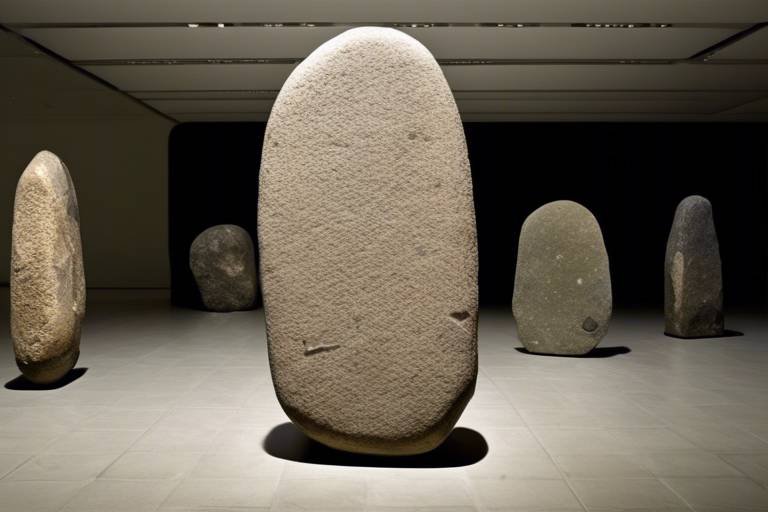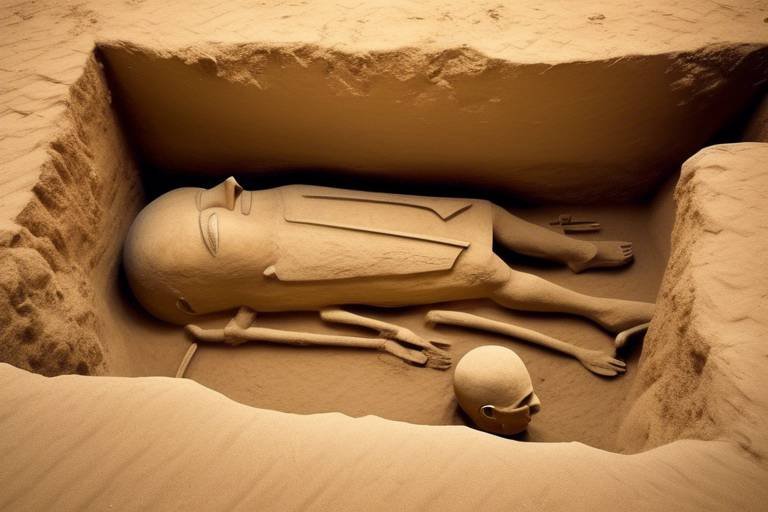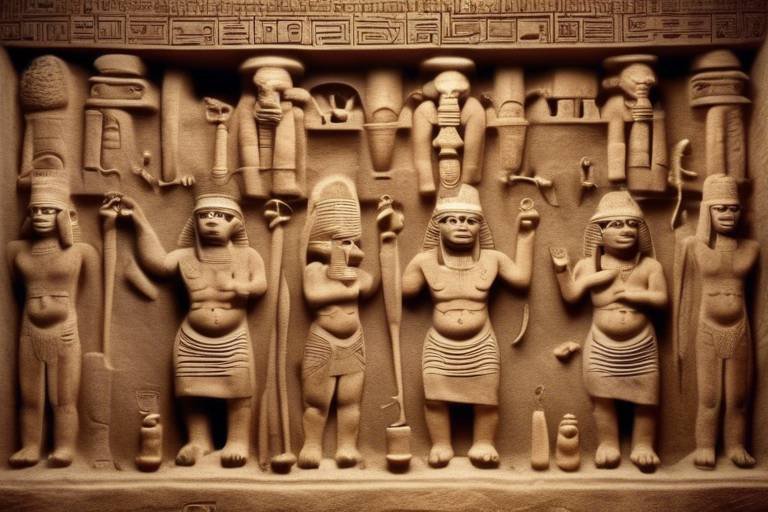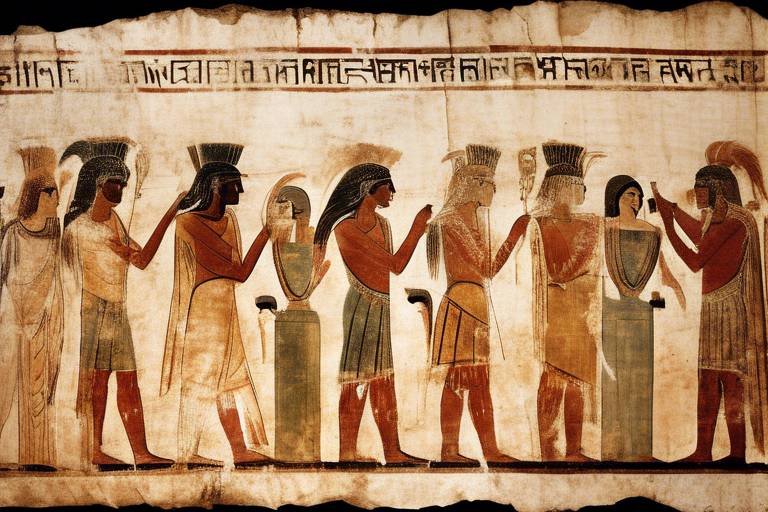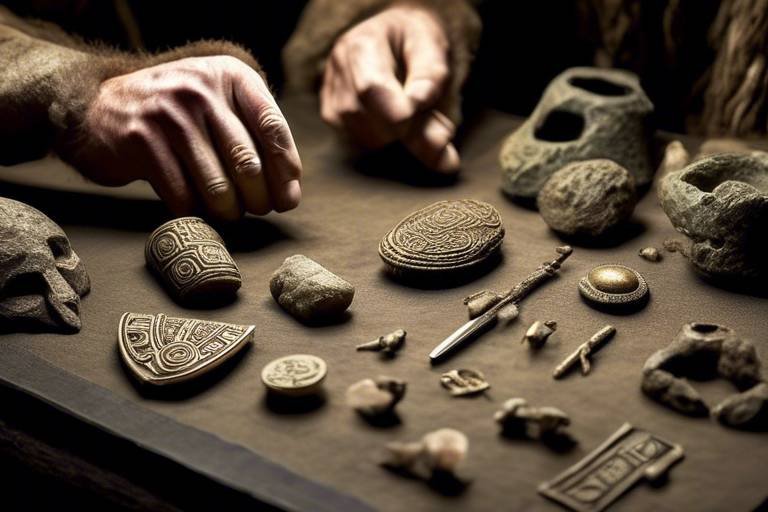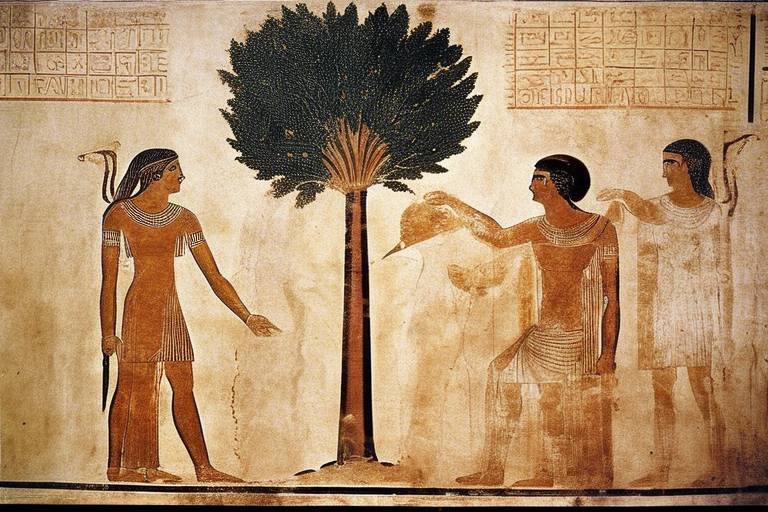The Secrets of Ancient Civilizations' Metalworking Techniques
Have you ever wondered about the enigmatic and sophisticated metalworking techniques employed by ancient civilizations like the Egyptians, Greeks, and Incas? These ancient societies, shrouded in mystery and intrigue, left behind a legacy of remarkable metalwork that continues to fascinate and inspire us today. Through their innovative methods and artistic mastery, they elevated metalworking to a form of expression that transcended mere craftsmanship.
Exploring the depths of history, we uncover the intricate metalworking processes of the ancient Egyptians, renowned for their exquisite jewelry, tools, and religious artifacts. Each piece a testament to their mastery of metallurgy and the meticulous attention to detail that defined their craftsmanship. The Egyptians' use of metals like gold and silver reflected not only their wealth but also their spiritual beliefs and cultural practices.
Turning our gaze to ancient Greece, we are captivated by the artistic and technical prowess of Greek metalworkers. From stunning bronze sculptures to intricate coinage, the Greeks showcased advanced techniques in casting, forging, and inlaying metals. Their metalwork not only served practical purposes but also embodied the beauty and grace of their civilization, immortalized in the gleaming surfaces of their creations.
Stepping into the realm of the Inca civilization, we are greeted by the sophisticated metalworking techniques that defined their culture. Skillful use of gold and silver in ornate jewelry, ceremonial objects, and architectural embellishments reflected the Inca's reverence for precious metals and their intricate craftsmanship. Each piece spoke of a civilization rich in symbolism and cultural significance.
Delving into Mesoamerican metalwork, we uncover the rich traditions of the Aztecs and Mayans, who crafted elaborate gold and copper artifacts with deep symbolic and ritualistic meanings. Their metalwork was not merely decorative but held spiritual and religious significance, serving as conduits to the divine and embodying the power and prestige of their societies.
Uncovering the ancient Chinese metallurgy, we witness the remarkable bronze vessels, weaponry, and ornamental objects that reflected the cultural importance of metalwork in ancient China. From intricate designs to functional tools, Chinese metalwork was deeply intertwined with rituals, ceremonies, and daily life, showcasing the ingenuity and creativity of ancient craftsmen.
During the Iron Age, civilizations ushered in revolutionary advancements in metalworking, mastering the smelting and forging of iron. This pivotal moment in history led to the production of durable tools, weapons, and architectural elements that shaped the course of human civilization. Iron became a symbol of strength and progress, marking a new era in metalworking.
Examining the symbolism and significance of metalwork in ancient civilizations reveals a world where metals like gold, silver, and bronze held religious, social, and artistic value beyond their practical uses. Each metal carried with it layers of meaning, from representing divine power to signifying social status, enriching the cultural tapestry of ancient societies.
Reflecting on the legacy of ancient metalworking techniques, we see how their innovative approaches have influenced modern metallurgy, artistry, and technology. The ingenuity of ancient craftsmen continues to shape our understanding of metalwork, inspiring contemporary artists and engineers to push the boundaries of what is possible with metals.

Ancient Egyptian Metalworking
Exploring the advanced and mysterious metalworking methods employed by ancient civilizations such as the Egyptians, Greeks, and Incas, shedding light on their innovative techniques and the significance of metalwork in their societies.
When it comes to ancient Egyptian metalworking, we are delving into a world of intricate craftsmanship and artistic mastery. The ancient Egyptians were renowned for their exceptional skills in working with metals, creating exquisite jewelry, tools, and religious artifacts that still mesmerize us today. Their expertise in metallurgy and craftsmanship was truly remarkable, reflecting a deep understanding of the properties of various metals.
One of the most fascinating aspects of ancient Egyptian metalworking was their use of precious metals such as gold and silver. These metals were not only valued for their beauty but also held significant symbolic and religious meanings in Egyptian society. The craftsmanship displayed in the creation of intricate jewelry adorned with precious stones and intricate designs showcases the level of skill and artistry possessed by these ancient artisans.
Moreover, the tools and weapons crafted by ancient Egyptian metalworkers were not only functional but also works of art in their own right. The attention to detail and precision in their work demonstrate a dedication to perfection that was characteristic of Egyptian craftsmanship.
Through the use of advanced techniques such as casting, forging, and inlaying metals, the ancient Egyptians were able to create objects that stood the test of time, symbolizing their belief in the eternal nature of the afterlife. The significance of metalwork in ancient Egyptian society extended beyond mere aesthetics, playing a crucial role in religious rituals, daily life, and the expression of power and wealth.
Ancient Egyptian metalworking represents a blend of technical skill, artistic vision, and cultural significance that continues to captivate us and inspire modern artisans and metallurgists alike.

Ancient Greek Metalwork
Ancient Greek metalwork stands as a testament to the artistic and technical excellence of this civilization, renowned for its breathtaking bronze sculptures, intricate coinage, and advanced metalworking techniques that continue to inspire admiration and awe to this day. The Greeks elevated metalwork to a form of high art, with their skilled craftsmen mastering the intricate processes of casting, forging, and inlaying metals to create exquisite pieces that were both functional and aesthetically pleasing.
One of the most remarkable aspects of ancient Greek metalwork is the attention to detail and the emphasis on realism in their sculptures. The famous Charioteer of Delphi, crafted in bronze, showcases the Greeks' ability to capture the human form with unparalleled precision and artistry. The intricate designs on Greek coins, such as the Athenian owl tetradrachm, reflect the sophistication and creativity of Greek minting techniques.
Ancient Greek metalworkers were also pioneers in experimenting with various alloys to enhance the properties of metals, such as adding tin to copper to create bronze. This innovation not only revolutionized the metalworking industry but also led to the development of stronger and more durable metal objects, from weapons to decorative items.
The Greeks' mastery of metalworking extended beyond mere craftsmanship; it was a reflection of their cultural and artistic values. Metal objects held symbolic significance in Greek society, often used in religious rituals, as offerings to gods, or as markers of wealth and status. The intricate patterns and designs found on Greek metalwork were not just decorative but carried deeper meanings and stories from Greek mythology and history.
Ancient Greek metalwork not only served practical purposes but also served as a medium for artistic expression and cultural communication. The legacy of Greek metalworking techniques continues to influence contemporary art and design, with modern artisans drawing inspiration from the innovative approaches and aesthetic sensibilities of their ancient counterparts.

Incan Metalworking Techniques
Exploring the sophisticated metalworking practices of the Inca civilization reveals a remarkable skill in working with gold and silver to create ornate jewelry, ceremonial objects, and architectural embellishments. The Incan metalworkers were highly revered for their intricate designs and meticulous craftsmanship, which often incorporated symbolic motifs reflecting their spiritual beliefs and cultural traditions.
One of the most fascinating aspects of Incan metalworking was their advanced techniques in alloying metals to achieve unique colors and textures in their creations. By combining gold with copper or silver, they were able to produce a wide range of hues, from shimmering yellows to deep reds, enhancing the visual appeal of their jewelry and artifacts.
The Inca civilization's metalworking techniques were not only aesthetically pleasing but also served important social and religious functions. Gold and silver objects held great symbolic significance in Incan society, representing wealth, power, and divine connections. These precious metals were used in rituals, ceremonies, and as offerings to the gods, underscoring their sacred value.
Furthermore, the Inca metalworkers demonstrated exceptional skill in repoussé and filigree techniques, manipulating metal sheets and wires to create intricate patterns and designs with remarkable precision. Their attention to detail and artistic flair set them apart as master craftsmen, capable of producing exquisite pieces that showcased their cultural sophistication.
Through the study of Incan metalworking techniques, we gain insight into a civilization that valued creativity, craftsmanship, and spiritual expression. The legacy of their metallurgical achievements continues to inspire contemporary artists and artisans, highlighting the enduring influence of the Inca's innovative approach to working with precious metals.

Mesoamerican Metalwork
Mesoamerican metalwork encompasses a fascinating array of artistic and cultural achievements from ancient civilizations like the Aztecs and Mayans. These skilled artisans crafted intricate gold and copper artifacts that not only showcased their technical prowess but also held deep symbolic and ritualistic significance within their societies.
The Aztecs, known for their elaborate metalwork, created stunning jewelry, ceremonial objects, and sculptural pieces adorned with intricate designs and symbolic motifs. These artifacts served not only as decorative items but also as symbols of status, power, and religious beliefs, reflecting the rich tapestry of Aztec culture and spirituality.
Similarly, the Mayans excelled in metalworking, producing exquisite ornaments, masks, and tools that displayed a high level of craftsmanship and artistry. The intricate detailing and use of precious metals in Mayan metalwork reflected their reverence for beauty and spiritual connection, with each piece carrying layers of cultural meaning and historical significance.
Through the intricate process of casting, hammering, and inlaying metals, Mesoamerican artisans transformed raw materials into objects of beauty and cultural importance. The intricate filigree work, symbolic motifs, and elaborate designs found in Mesoamerican metalwork speak to the ingenuity and creativity of these ancient civilizations, offering a glimpse into their sophisticated artistic traditions and technological achievements.

Ancient Chinese Metallurgy
Ancient Chinese metallurgy stands out as a remarkable testament to the ingenuity and skill of the ancient Chinese civilization. The art of metalworking in ancient China was not merely a craft but a revered practice deeply intertwined with cultural traditions and beliefs. Chinese metalworkers excelled in creating exquisite bronze vessels, intricate weaponry, and ornamental objects that served both practical and symbolic purposes.
The production of bronze objects, such as ritual vessels known as "ding" and "hu," showcased the advanced casting and alloying techniques mastered by ancient Chinese metallurgists. These bronze artifacts were not only utilitarian but also held significant ritualistic importance, symbolizing power, prestige, and spiritual connections in ancient Chinese society.
Ancient Chinese metalworkers also crafted elaborate weaponry, including swords, spears, and armor, using sophisticated forging and tempering methods. The intricate designs and inscriptions on these weapons reflected the craftsmanship and artistic sensibilities of the artisans, highlighting the fusion of functionality and aesthetics in Chinese metalwork.
Moreover, ornamental objects such as mirrors, bells, and decorative fittings displayed the intricate inlaying and embellishment techniques employed by ancient Chinese metallurgists. These objects served decorative and symbolic purposes, symbolizing wealth, status, and cultural sophistication in ancient Chinese society.
The cultural significance of metalwork in ancient China extended beyond practical applications, with metals like bronze holding symbolic meanings associated with power, authority, and spiritual beliefs. The craftsmanship and artistry of ancient Chinese metalworkers were revered and celebrated, reflecting the importance of metalwork in rituals, ceremonies, and daily life.

Iron Age Metalworking Innovations
During the Iron Age, civilizations experienced a significant leap forward in metalworking innovations, particularly in the mastery of iron. This era marked a pivotal moment in history as societies transitioned from using bronze to harnessing the power of iron. Iron, with its durability and strength, revolutionized the production of tools, weapons, and architectural elements, shaping the course of human civilization.
One of the key advancements during the Iron Age was the refinement of iron smelting techniques, allowing for the extraction of iron ore and the production of high-quality iron. This breakthrough enabled blacksmiths to forge iron into various implements, from agricultural tools to formidable weapons like swords and spears. The widespread adoption of iron tools significantly boosted agricultural productivity and warfare capabilities, fueling societal progress and expansion.
Moreover, the Iron Age witnessed the development of sophisticated forging methods, such as hammering and shaping molten iron into desired forms. Blacksmiths honed their skills in manipulating iron, creating intricate designs and functional objects that served diverse purposes in daily life. The craftsmanship and artistry displayed in ironwork during this period reflected the ingenuity and creativity of ancient metalworkers.
In addition to tools and weapons, iron was utilized in the construction of architectural marvels, including fortifications, bridges, and ceremonial structures. The durability of iron made it an ideal material for supporting large structures and withstanding environmental challenges, contributing to the advancement of engineering and construction practices during the Iron Age.
The Iron Age not only transformed the way societies interacted with metal but also influenced cultural and artistic expressions. Iron artifacts became symbols of status, power, and technological prowess, shaping social hierarchies and belief systems. The intricate designs and symbolic motifs found in ironwork reflected the spiritual and aesthetic values of ancient civilizations, preserving their stories and traditions for future generations.
As we look back on the innovations of Iron Age metalworking, we recognize the enduring impact of these advancements on human history. The transition to iron metallurgy laid the foundation for industrial progress, technological innovation, and artistic evolution, leaving a lasting legacy that continues to shape our world today.

Symbolism and Significance of Metalwork
Metalwork in ancient civilizations was not merely a craft but a reflection of their cultural beliefs, social status, and spiritual practices. Metals like gold, silver, and bronze held profound symbolism and significance beyond their material properties. For example, gold was often associated with the divine, representing the sun's eternal power and the gods' favor. In contrast, silver symbolized purity and the moon's influence, often used in ceremonial objects and offerings. Bronze, a durable alloy, signified strength and resilience, commonly used for weapons and statues of deities.
The intricate designs and motifs found in ancient metalwork were not just decorative but carried deep meanings rooted in mythology, religion, and societal values. Engraved symbols and patterns on metal artifacts conveyed stories of creation, heroic deeds, and spiritual beliefs. The craftsmanship involved in metalworking was highly revered, with skilled artisans considered as conduits of divine inspiration, infusing their creations with spiritual essence and symbolic significance.
Moreover, metalwork played a crucial role in establishing social hierarchy and power dynamics within ancient societies. The possession of elaborate metal objects denoted wealth, status, and authority, distinguishing the elite from the common populace. Royal regalia, ceremonial weapons, and ornate jewelry crafted from precious metals served as symbols of rulership and divine mandate, reinforcing the ruler's legitimacy and connection to the supernatural realm.
Across different cultures and civilizations, metalwork was intertwined with religious rituals, funerary practices, and symbolic ceremonies. The use of specific metals and techniques in crafting sacred objects and temple adornments was believed to imbue them with spiritual energy and protective powers. Metal artifacts served as conduits for communication with deities, offering prayers, and invoking blessings for prosperity, fertility, and victory in war.
The significance of metalwork extended beyond the aesthetic and functional aspects, permeating every aspect of ancient life and belief systems. Whether in the form of intricate jewelry, elaborate sculptures, or ceremonial vessels, metal artifacts served as tangible expressions of cultural identity, artistic excellence, and spiritual devotion. The legacy of ancient metalworking techniques continues to inspire contemporary artisans and scholars, highlighting the enduring impact of metalwork on human history and creativity.

Legacy of Ancient Metalworking Techniques
Ancient civilizations have left a profound legacy in the realm of metalworking, shaping the course of history and influencing generations to come. The innovative approaches and advanced techniques employed by cultures such as the Egyptians, Greeks, Incas, and others have had a lasting impact on modern metallurgy, artistry, and technology.
One of the most significant contributions of ancient metalworking techniques is the mastery of metallurgy, which laid the foundation for the development of sophisticated alloys and metal compositions. The skillful manipulation of metals like gold, silver, bronze, and iron enabled ancient craftsmen to create durable and aesthetically pleasing artifacts that stood the test of time.
Moreover, the artistic ingenuity displayed in ancient metalwork continues to inspire contemporary artists and designers, with many drawing inspiration from the intricate patterns, elaborate designs, and symbolic motifs found in ancient artifacts. The craftsmanship and attention to detail exhibited by ancient metalworkers serve as a testament to the human capacity for creativity and innovation.
Furthermore, the cultural significance of metalwork in ancient civilizations transcends mere craftsmanship, as metals held symbolic and ritualistic importance in religious ceremonies, social hierarchies, and artistic expression. Gold, for example, was often associated with divine power and wealth, while bronze symbolized strength and endurance.
The enduring legacy of ancient metalworking techniques can also be seen in the technological advancements that have been built upon the foundations laid by our ancestors. The knowledge and expertise passed down through generations have paved the way for modern innovations in metallurgy, engineering, and manufacturing processes.
As we reflect on the legacy of ancient metalworking techniques, we are reminded of the ingenuity, creativity, and cultural significance embedded in the metal artifacts crafted by our predecessors. Their contributions have not only shaped the physical landscape of our world but also enriched our understanding of the past and inspired us to push the boundaries of what is possible in the realm of metalwork.
Frequently Asked Questions
- What were the primary metals used by ancient civilizations in their metalworking?
Ancient civilizations such as the Egyptians, Greeks, Incas, and others primarily utilized metals like gold, silver, bronze, and copper in their metalworking endeavors. These metals were valued for their durability, malleability, and symbolic significance.
- How did ancient metalworkers acquire the knowledge and skills for their craft?
Ancient metalworkers learned their trade through apprenticeships, passing down techniques from generation to generation. They honed their skills through experimentation, observation, and a deep understanding of the properties of different metals.
- What role did metalwork play in the social and cultural contexts of ancient civilizations?
Metalwork held immense cultural and symbolic significance in ancient societies, serving as a status symbol, religious offering, and artistic expression. It was used in ceremonies, rituals, and everyday objects, reflecting the values and beliefs of the civilization.
- How have the metalworking techniques of ancient civilizations influenced modern practices?
The innovative metalworking techniques of ancient civilizations have had a lasting impact on modern metallurgy, art, and technology. Many of the methods and processes developed by ancient metalworkers continue to inform contemporary practices and inspire new innovations.





